My latest AI strategies discussion features an interview with Soren Marklund, Vice President of Global Services Technology Consulting and AI Data Strategy at Ericsson. We explore how Soren's team leverages modern data architectures to enhance customer interactions and drive business benefits.
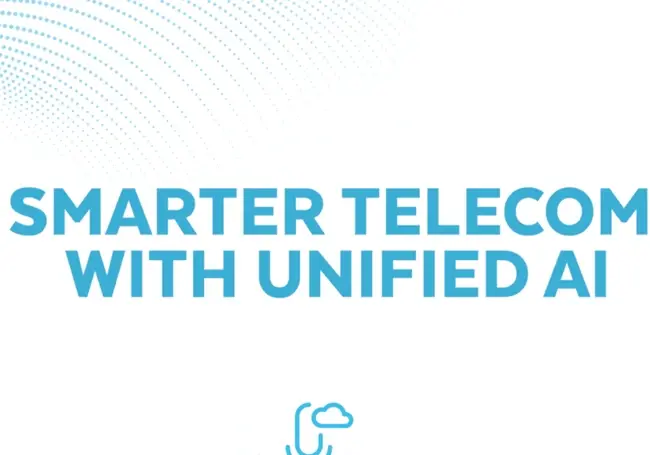
Our Q&A interview covers the importance of a unified data operating model, challenges faced with data silos, and the role of AI and machine learning in improving customer service.
Dana Gardner: Welcome, Soren. We're delighted to have you with us.
Soren Marklund: Thank you for having me.
Dana Gardner: You know, few functions are more integral to an enterprise success than effective and efficient customer service and support. And over the past few decades, the means -- not just the ends -- of sophisticated customer services have proven beneficial to businesses in many ways by capturing all the information that it requires to deliver such customer support.
For example, companies coalesce and structure their essential knowledge and free it from silos by capturing and structuring all the feedback that they receive from what clients and customers tell them about how their products and services are working in use. This attains priceless insights into making products and services better to maintain and how to improve the next iterations.
Clearly a focus on managing and exploiting all the data and information around the service and support function pays huge dividends. And that was true even before we applied machine learning and artificial intelligence (AI) tools into the mix.
In today's discussion, we'll explore how multinational networking and telecommunications powerhouse Ericsson has employed modern data architectures to further innovate around customer interactions for multiple valuable business benefits.
Soren, tell us why it's so important to get the data architecture right in order to pursue better customer service through greater use of AI.
Soren Marklund: It is a very relevant question. And, of course, it’s been on our minds for quite a few years. We have, as a company, wanted to be data driven in everything we do -- whether it's in services, products, interaction with customers, and what have you.
The journey began with how to drive such intelligence. We realized very quickly that the data fabric, the data foundation, and the data operating model are instrumental in making this happen. We began the journey of looking at data as an asset within the company. Prior, we dealt with data as the input-output of different processes. We have been a very process-focused company for many years.
When we started a data journey, we realized that the process itself is what drives information and efficiency. But the importance of data is equally important. Managing data and the lifecycle of data -- and having a unified way of working with data -- is pivotal to making this happen.
You could argue that we have been operating in silos around data. And naturally that means that everyone within the company -- or even on the customer side – does not necessarily have within their reach a view of all the data that they should.
The opportunity is probably the biggest that I have ever seen in the industry right now. It's breaking down these silos, working in a data operating model, and then unifying it. And for Ericsson, being an international company, it's very important that we have unified ways of working with data across the world.
Dana Gardner: And it's important for this data to be trusted to be valuable. It's the old adage of, “Garbage in, garbage out.” You want to have that high-quality, trusted, and secure data.
What has Ericsson done to pursue not only gathering as much data as possible, but adding a qualitative value and trust benefit as well?
Soren Marklund: Yes, as we put the data operating model in place, we realized that we need to work in two dimensions. One is the digital capabilities that we need to embrace and innovate around. The other is a more horizontal aspect across the company. We needed to have a data operating model. We actually assign data managers to operate and take care of the assets as a data asset.
The two dimensions, Dana, the horizontal being the data operating model and the vertical being the digital capabilities. You then need to look at that and say, “How do you trust the data?” Because when we started the journey, you could argue we had many sources of truth.
Whomever wanted to use data only trusted what they had within their own reach. Yet we collected a lot of data in multiple instances across the company. So now, with the data operating model in place, we are harnessing common sources of truth so that we have one ownership and one drive to ensure that the data is of the high quality it needs to be to ensure that it has the freshness it needs, and also to make sure that we have the metadata needed behind the data to really put it in the context of the user.
Dana Gardner: Network devices are notorious for delivering reams of data. There's so much log data, for example. What were some of the challenges that you've been facing to not get overwhelmed, but to find the jewels within all of that vast volume of data from your devices in the field and across entire networks?
Soren Marklund: Yes, to your point, if you look at the mass of data that we have, it's easy to get trapped in the noise because there is just so much. You have to have the context of what you're trying to look for. This is where the opportunity comes in for the service organization.
This is where we have put a lot of emphasis within our Ericsson units, to embrace and embed service knowledge into this process. That domain expertise allows us to be more focused on the data that we need to capture, but also to understand what is symptomatic in the data versus cause-and-effect in the data.
If we can drive to the true insights that we need to fully understand -- whether it's performance of our products in the network, customer experiences, or just looking at correlation points – we try to understand what more could we innovate around.
Dana Gardner: I'm really interested to hear more about how you've gone about this unified data structure and what you can do with it when you have it in place. But tell us first a little bit about yourself, your role at Ericsson, background, and why taking on these challenges is important and valuable to you in your career and as an individual.
Soren Marklund: I have had the opportunity and the fortune to be working for a company that allowed me to work in many different roles over the years. I have been on the product side, in sales, and in operations. In all of these dimensions, I've been able to see across the company what drives our customers’ experiences.
I have been very much focused with a passion around how do we transform to be more customer-centric and data-driven across the company. The journey started, as I mentioned, around driving intelligence into everything we do.
I then realized that my passion is around driving the strategies for the data and the intelligent transformation around everything we do. I've taken a strong role over the last two years to do what I can do to further and accelerate the company and this uptake.
Dana Gardner: Soren, why do you think this is an exciting time in the evolution of technology to bring about the realization of your passion? Is this a unique inflection point? Are there things that we can do now that we couldn't before?
Soren Marklund: Absolutely. When you look back at the journey of, for example, the AI machine learning activities, it was very much driven by expertise and teams of expertise within the company. It required such deep data science expertise or data engineering expertise that it wasn't accessible to everyone. We have been on that journey for many years and with the expertise we have developed some very smart and intelligent use cases around it.
But the emergence of generative AI -- and now agentic AI and multi-agentic AI is -- taking this to an accelerated pace than in the past. This is what's opening up the opportunity across the company. Now we can work in natural language. We can work in no code scenarios. We can data mine and explore the data and in many other ways than just relying on a top-of-the-pyramid expertise to guide us.
This is democratizing things within the company. We're going to accelerate that path. When you look at the GenAI models and the LLM models behind it, they're to a great extent pre-trained. We need to just add our models to make it context-aware into what we are trying to do. But it's accelerating so much faster nowadays with the advancements in technology.
Dana Gardner: Please describe Ericsson's federated operating model, particularly within a hybrid cloud setup. How do you characterize and describe what's come to be the best and most up-to-date approach?
Soren Marklund: We had, as I mentioned, been working in silos. To a great extent, you could argue that we still do in many ways. Not only silos on our side between units and such, but also in silos between us and our customers. The opportunity is unifying a data architecture that embraces more collaboration across all of Ericson and across our customers.
We’re implementing and driving forward a more unified, federated operating model. And by that we mean we can work in the context of different countries, different regions, and work better with our customers in those regions.
At the same time, based on assuring the sensitivity and the privacy, we can harmonize the data on a global level to attain full insights of what's happening all across our customers -- and for all of the products and the behaviors of our products.
And, again, in this context, we can embed the instrumental services knowledge. We can converge a federated operating model and embed the service knowledge into this process to gain, in the end, more insights by having information at the fingertips in discussions and enhancing the experience with our customers.
Dana Gardner: And what have you looked for particularly in the providers, the vendors, the suppliers of the infrastructure behind this federated approach? What's important in order for you to get what you need to get this done?
Soren Marklund: In the past, we used to move the data to the intelligence processing. That meant we were relying on having data transferred in many instances around the world to a home where the applications were. The beauty now with a more federated model is that we can move the intelligence and the logic to the data.
This allows us to innovate at a much greater extent than in the past. And not only can we innovate more, but we can then engage in more partnerships. And this is what has probably unlocked the biggest opportunity for us as we move forward.
That’s due to working with data in a partnership within the overall ecosystem between partners and us – and also between partners on the customer side and the customers themselves. So having the federated operating model around the data architecture is going to further open up a whole new span of innovation, we believe.
Dana Gardner: What do you consider some of the key technologies that are endowing you with this ability to break out of those silos -- and at the same time, manage the trusted, secure, comprehensive data fabrics?
Soren Marklund: We know that the mission of just consolidating things to a common data warehouse, or a common data storage, is almost an impossible journey. We realize we need to be in a hybrid mode across the company, but we also realize that we need to be able to take advantage of the data in a more unified way.
This is how the data fabric plays a critical role due to the multiple databases across the company and by interacting with partners and customers. As we look forward now, for example, the [Apache] Iceberg standards around how we work in a hybrid mode is going to make a difference for us as we look at the harmonization of different architectures across the world.
And then we will see what makes sense to consolidate the support of this journey. But the first step is to make sure that we can operate in a more unified way. That includes managing the analytics, the insights, and building the generative AI context [on top of Iceberg] in a more unified way. That is the real societal-level innovation we are looking for. The data aspect is the enabler to make that reality in an accelerated way.
Dana Gardner: And, of course, doing this isn't just an academic activity. There are some huge business benefits. Let's look at some of the takeaways from the business outcomes perspective, customer experience, and personalized services.
For example, how has your unified data foundation and fabric contributed to the business benefits around the customer experience and services?
Soren Marklund: When you operate in silos, you don't always have access to the view of each vendor. In that context, operators and their customers operate on their side, and we operate on our side.
The beauty now with converging the silos is we can be much more in a digital collaborative experience. That is the path forward, even to accelerate from where we are today. We see great opportunities in enhancing the customer experience. When we have more unified data at hand, we can correlate that data across our company, the customers, and with partners.
By taking advantage of and correlating across the marketplace, a plethora of different vendors capabilities, and all of the reuse, we gain new insights that lift the customer experience. There is so much hidden within the data that in the past we have not been able to use.
Dana Gardner: And I suppose the foundational description of productivity is doing more and better with less. Is there a way of using this data to optimize networks or improve energy consumption and performance? How were you able to translate the data investment into solid returns when it comes to network efficiency?
Soren Marklund: A very good and relevant question. We are exploring this in all contexts. When we look at the energy efficiency, we already have a number of contracts with our customers around the world to work with different power consumption schemas. There are, for example, low traffic times in the network, in different pockets of the network, and we can optimize the usage of energy in that context.
But we also look at what might cause anomalies in consumption of energy in the network. And that is also an insight we can bring to our customers through the data that we can gather and then deliver those insights back to our customers. That explainability helps the customers, and we can guide the customer on what they can do. We can even drive certain things in an autonomous way.
We are increasingly driving data as being a part of our journey to intent-based services and intent-based networks because that is ultimately how we reach maturity of autonomous networks and services.
Dana Gardner: And another facet of better data analysis and access is moving beyond extrapolation to true predictive analytics. Being able to analyze for strategic advantage, particularly against your competitors who may not be doing this same diligence when it comes to data.
How are you able to get that intelligence benefit on a predictive decision-making basis?
Soren Marklund: Yes, this all relies on having our targeted information around the data, right? Because if you take all the data with our global customers, the data volume is petabytes every day.
That is too much. What can you do with that? It's really noise to begin with. We need to understand what to look for that correlates into insights that will help the customer. We try to lift more and more, as I say, experience KPIs in working with our customers to make that reality possible.
We are trying to embed the service knowledge in capturing the right data at the right time to make a difference in the end for determining the experience that our customers are having. And we have done this to some extent already. We applied a number of different activities and technologies in elevating anomaly understanding.
By lifting that data insight perspective, we can begin to understand more and more what is happening in our customer's network, and how can we correlate the information that we may have on the Ericsson side with the customer's data to drive more insights back to the customer.
Dana Gardner: It's fascinating how when you develop this language of data value -- when you extend that out to your supply chain or the ecosystem that you operate in or directly to your customers -- there's this mutual benefit. And that means even more sharing takes place, and therefore more opportunity to use different data sets in different ways.
Do you see this data modernization and advantage as a way of binding organizations together? The silos are not just internal, but you're breaking down external ones, cultural ones as well even.
Soren Marklund: Yes, exactly. And I used to say that you don't know what you don't know. Because when you have limited visibility to what you could do with the data, you really don't have a full perspective of what is within the data scope that I could know.
I could say, “Decipher the right data points out of this.” So, we have been very focused on trying to understand how we can lift certain aspects of the data for making an impact on the customer. And that data could be in many contexts, right? It could be efficiency, experience, innovation, automation, and what have you.
The data in the end is fundamental to all of these aspects. When you start this discussion, it's often, “Why do you want my data?” That kind of discussion. So, it is important, of course, that this is a collaborative perspective because there needs to be an impact and a benefit back. Otherwise, collaboration does not happen.
We need to contribute; we need to embed our knowledge and expertise into the ways of working. Our customers can then embed their knowledge and expertise. Together we drive more insights from the data. And then we both benefit from evolving the advancements in all of our technologies that ultimately, again, helps our customers.
Dana Gardner: We're starting to see actual productization of data and analytics themselves. So even though you might be a networking and telecommunications company -- where your bread and butter is hardware, software, networking devices.
But when you take advantage of the insights that you can gain through those devices and relationships, you might be able to actually productize the analytics and sell that back and monetize as an actual additional profit and loss center. More emphasis on the profit.
Are you starting to do that? Are you seeing that your data and analytics themselves become another product for Ericsson?
Soren Marklund: Yes, absolutely. We have seen this as three steps on a ladder. One, the first step, is to attain data insights from our products. What is the behavior, what is the configuration, and how do our products perform in the network? So that's the product-level dimension.
But then if you step up a level and say, “Okay, what is happening on more of an ecosystem or broader network level?” You then begin to see what is happening network-wide. You can enrich the data points from that perspective, and that drives new insights.
Above that, thirdly, you look at the industry verticals that ride on the network. And then you have new data insights that you can enrich that with. You build an incremental step of enrichments from the data to the network, and then to the industry-specific view.
And that, ultimately, we will drive even more insights. Because in the end, when you sit there in a vertical industry, you need to understand, “Well, what is the behavior of the network and what is the behavior of the product?”
On the flip side, applying a product to the network and driving the adoption of that also needs to have an understanding. How does it behave in the industry perspective -- whether it's in manufacturing, the automative industries, public safety, or whatever it might be? That full dimension is important.
Dana Gardner: Yes. And having an advantage because of your perspective and doing the proper data modernization you’re in a unique position to then create AI agents, and constellations of agents, that are trained in specific ways through that perspective. And so those agents become not just general-purpose, but specific to what you can do as a company in a vertical industry.
Are you seeing that as an opportunity, too? And how far along on the agentic AI journey are you?
Soren Marklund: This is probably the most exciting part of our journey now moving forward. And to your question, when you look at the adoption of GenAI or AI in general, the first question is what is the precision and accuracy of this model? When do you begin to trust the model’s execution? When do you begin to trust that this is an autonomous perspective, with the relevant recommendations and actions?
And we have seen this as a journey because many models -- especially untrained models -- have not been more accurate than maybe a 50, 60, or 70 percent accurate, and that may not be enough.
For a customer to make a decision or take an action on the network could have huge effects. So, we really want to make sure that we have the right precision and accuracy in the models that we recommend.
This is why ability has been a key component in the ways of working from data and the services that play a critical role there. How do we lift explainability in working with our customers? How do we drive trustworthiness in the models as we move this forward?
This is why agentic AI will play a significant role because we can use agentic AI to streamline and improve the precision. You can begin to have agent models interact with each other to improve the position before you ultimately make a change.
Dana Gardner: Part of the way that we want people to understand this better is not just to talk about it abstractly, but to look at specific examples and use cases. So, Soren, do you have any specific examples on tactical or strategic benefits in some of these feedback loops that you've been describing?
Are there some concrete ways that we can describe how this is working in practice?
Soren Marklund: Yes, we have been in the chatbot business for many years. And we all see chatbots as just a very initial starting phase on this journey. Every one of us who have been working in our personal lives with chatbots realize that it's not always working as well as we think it should.
But when we now move this into GenAI and more intelligent means, it's surprising how smart the different processes can become. For example, we have a number of pilots and proof of concepts already with our customers around the world. Ultimately, this drives the journey toward intent-based setups. What is the intent that the user wants to achieve, and how do we ensure that we have the right agents to ensure that that intent is being delivered?
Having the right data and the right logic to deliver on that intent -- but doing so in a way that drives explainability. That means whoever the user is, whomever is intended to control this, can understand what is really happening in the network. What is happening in different context of actions being taken?
It's not an autonomous activity living in its own life. Rather it's an augmented world where we as people around the processes are more resource managers or managing agentic processes to ensure they do the right thing and ensuring that the explainability is there to do the right actions based on what they know.
But we began this journey only a few years back, applying GenAI. Our ambition around this is to evolve it into three different dimensions. One is what we refer to as “talk to the data,” and this is deep diving into data in whatever context that the user wants and leveraging GenAI in that context. So, talk to data is the first step.
Then, secondly, we, “talk to the digital twin.” We want to also be able to simulate different scenarios using GenAI and agentic AI. The data behind it explores scenarios in a simulated mode and we call that “talk to the digital twin.”
And then the ultimate view, which where we also have had a number of exploratory pilots already in place, is to “talk to the network.” Because ultimately that's where we want to be.
This is the biggest transformation that we are on together with our customers. Because for the last 50 years we have been very reactive in the way of working around our customers. We look at alarms, at configurations, and then we act and react accordingly.
But now with the emergence of these technologies, we can begin to explore in a natural language what is the performance of certain products in the network, what anomaly might be there, and do so in a natural language format.
And this is a huge transformation compared to having the expertise to deep dive into the databases and the data context and filter through the noise across all of what we do. We can bring that into a natural language interaction, empowered by adjunct AI.
All with the right data at the right time, of course, to make sure that you can bring the trustworthiness to the results.
Dana Gardner: Well, it truly sounds like you've expanded the notion of customer service and support more into a fuller relationship with your customer – with the data itself being a third leg on the stool. There's you, your customer, and the data. And then the analytics benefits that you can enjoy by working together.
What does the future portend, what do you see coming next in elevating this relationship? How are you changing the relationship beyond just being reactive, as you say?
Soren Marklund: In the past, when we were more in the reactive mode, we were more in a holding pattern waiting for the customers and their products to break, fail or drift off in some way. And only then we jumped in and began to reactively address those issues with our customers.
Now, the journey in front of us -- and to a great extent we already embarked on -- is using the data that we can gather, the data insights that our customers can share with us, allowing us to understand the performance of our products in a much more proactive way.
We have started a practice called customer success transformation. And this is probably also one of the key aspects of the journey ahead. When we have the data, when we have the intelligence, how do we really now ensure that we make the greatest impact possible on our customer's processes?
That is the customer success transformation that we have embarked on. So that entails working with our customers, breaking down the silos, understanding what success from the customer’s perspective is. What is helpful for them? How could we help our customers in their processes, their models without force, without being intrusive to what they do and how they do things?
By understanding the data points, we take advantage of and guide our customers to certain customer success objectives. How do we contribute through more data-driven processes, more customer-centric processes to ensure we are part of that journey and make the greatest impact that we can?
In the past, we have developed a lot of intelligent capabilities over the years, but often we develop them and then we go to the customer and say, “Will this apply to you? Look what we can do. These are the insights we can bring to you if you adopt this product or this service.”
Now, with a customer success transformation perspective, it's really looking at it the other way around. What is the customer trying to achieve? What are the bottlenecks in front of them? What data are they not utilizing? What insights do we have to help?
That can bring about a big difference for the customer in their journey. So, this customer success transformation is the overreaching umbrella over everything we're trying to do around the data and the intelligent activities.
Dana Gardner: Wow. Well, you can't get more strategic than that: Helping your customers at the highest level to anticipate their future and then providing them what they need -- perhaps before they know it themselves. That's the ultimate business support value.
Thank you so much to our latest Data Cloud Podcast guest, Soren Marklund, Vice President of Global Services Technology Consulting and AI Data Strategy at Ericsson. We so much appreciate you sharing your thoughts, expertise, and experience, Soren.
Soren Marklund: Thank you for having me. I really enjoyed it.
Dana Gardner: My pleasure.


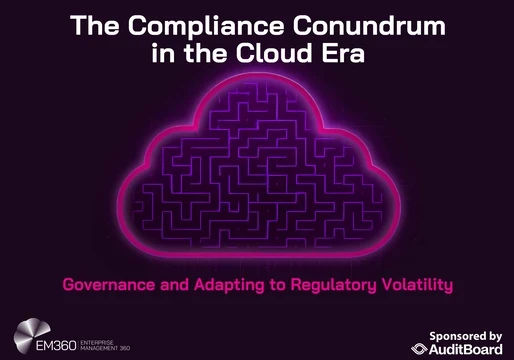

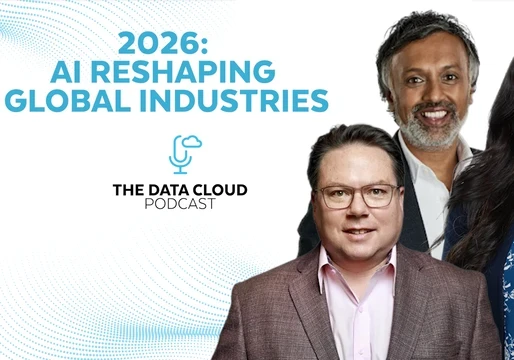
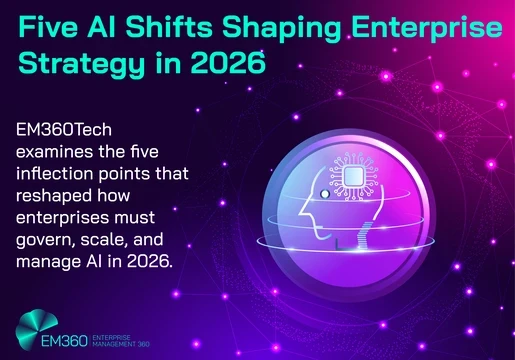
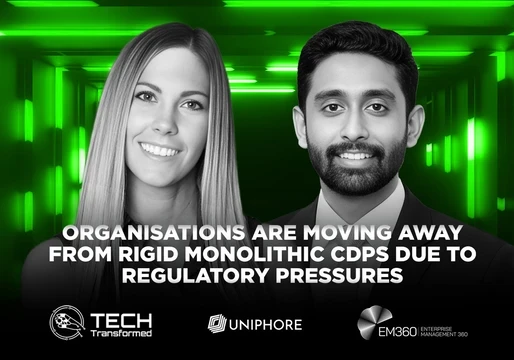
Comments ( 0 )